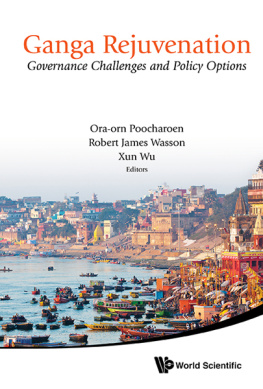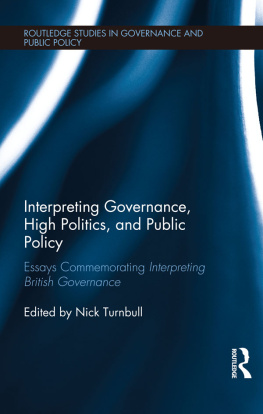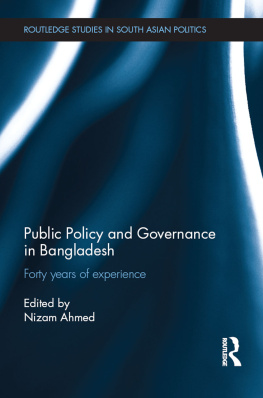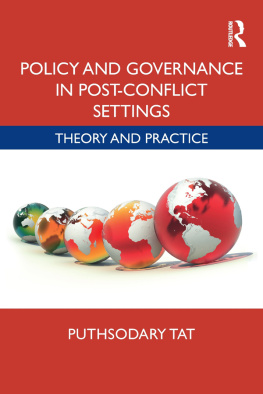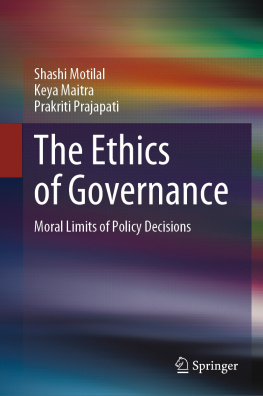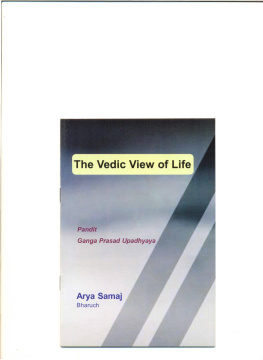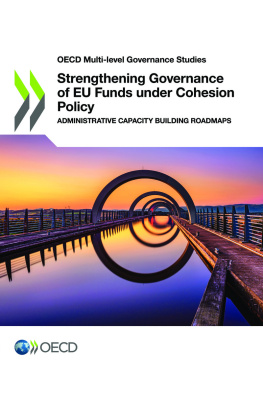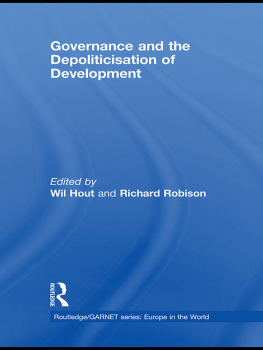

Published by
World Scientific Publishing Co. Pte. Ltd.
5 Toh Tuck Link, Singapore 596224
USA office: 27 Warren Street, Suite 401-402, Hackensack, NJ 07601
UK office: 57 Shelton Street, Covent Garden, London WC2H 9HE
British Library Cataloguing-in-Publication Data
A catalogue record for this book is available from the British Library.
GANGA REJUVENATION
Governance Challenges and Policy Options
Copyright 2018 by World Scientific Publishing Co. Pte. Ltd.
All rights reserved. This book, or parts thereof, may not be reproduced in any form or by any means, electronic or mechanical, including photocopying, recording or any information storage and retrieval system now known or to be invented, without written permission from the publisher.
For photocopying of material in this volume, please pay a copying fee through the Copyright Clearance Center, Inc., 222 Rosewood Drive, Danvers, MA 01923, USA. In this case permission to photocopy is not required from the publisher.
ISBN 978-981-4704-57-1
Desk Editor: Sandhya Venkatesh
Typeset by Stallion Press
Email:
Printed in Singapore
PREFACE
This book is a collaborative project by graduate students of the Master of Public Administration (MPA) program (2015) at the Lee Kuan Yew School of Public Policy (LKY School), National University of Singapore. The project is a year-long module called the Governance Study Project (GSP), which is a flagship module of the MPA program. The module engages mid-career students to study a real-world complex problem as a cohort; and to provide analysis and policy recommendations from various angles.
We would like to sincerely thank all informants from the Indian public agencies, civil society groups, think tanks, and universities for sharing all valuable information to make this book possible. We would also like to thank Maitreyee Mukherjee, who worked tirelessly as a research assistant for this project and co-authored .
We hope that this book is useful for policy-makers, activists, and the general public who are interested in the Ganga Rejuvenation project.
Ora-orn Poocharoen, Chiang Mai University
Robert James Wasson, National University of Singapore
Xun Wu, Hong Kong University of Science and Technology
CONTENTS
Dawa Tshering, Denny Ariaputra, Soh Siew Luie, Tashi Tobgay and Wang Nian
Hlaing Myat, Lay Sopagna, Sirilak Kakanopas, Soe Myint Aung, Visvanathakkurukkal Sokkanathan and Joost Buurman
Low Lay Chin, Mark McKiernan, May Yu Lwin, Siow Boon Teik, Erwin, Thamil Selvan Govintharaju
David Geordie Wilks, Gilbert E. Lumantao, Giridharan Sengaiah, Gloria Wei Wanting, Karen Ann Leong Sun Lian and Khial Muhammad Afghanzai
Vishal Kapoor, Xuan Xiao, Zhang Jiapeng, Zhao Huaning
Kok Hoong Chan, Thi Thanh Huyen Do, Lay Ling Lim, Salai Aung Myint and Shikha Thaman
Doris Maharlika H Dizon, Prudente S Parcia, Rakesh Kumar, Wai Min Kwok and Maitreyee Mukherjee
Thanathorn Asanarong, Sowon Jeon, Ren Yuanlin, and Christopher Yeo
Elijah Lau Maung-Hoe, Chang Lih Kang, Goh Si Mien, Tetsuya Lim Hayashi and Tran Thanh Tung
Han Mingyu, Cao Dongdong, Li Na, Panji Ruky
Chapter 1
INTRODUCTION
Ganga Indias National River and its catchment have significant economic, cultural, social, environmental and religious importance for its more than 500 million inhabitants, or 43% of the population of the country. Across eleven states, the Ganga catchment accounts for more than a quarter of land mass and one third of its total surface water. The Ganga is also considered Indias most sacred river, known as Ganga Ma (Mother Ganga), and is worshipped and revered as a living goddess by the hundreds of millions of Hindus in India and around the world.
Despite such iconic status, the Ganga River has been heavily polluted due to rapid urbanization, massive expansion of industrial development, and long-standing and increasingly intensive agriculture and pastoralism. The towns and cities located along the river generate some 3 billion litres of sewage every day, and less than half of this is treated before reaching the Ganga due to insufficient and often non-functional sewage treatment plants (STPs). Industrial waste is another pollutant source. Tanneries are one of the largest contributors to industrial pollution, followed by paper and pulp, chemical, sugar, and textile industries. The perennial flow of the river is limited by excessive withdrawals upstream into irrigation canals and by reservoirs constructed for irrigation and hydropower generation, which further aggravates the pollution problems by reducing dilution.
Indian governments have been trying to clean up the Ganga over the last three decades. The first Ganga conservation project, Ganga Action Plan-1 (GAP I) was launched in 1985 under the leadership of then Prime Minister, Mr. Rajiv Gandhi, to deal with water pollution. The project was initially expected to be completed in five years, but the Indian government extended it to 2000 after realizing the enormity of the problem. GAP Phase I was later joined by GAP Phase II to cover tributaries and cities exempted under GAP Phase I. In particular GAP II covered the Yamuna, Damodar and Gomati rivers and the big cities along these Ganga tributaries. The decades of effort through GAP I & II resulted in the addition of sewage treatment capacity but with limited visible change to the Gangas health.
In May 2014, Prime Minister Narendra Modi brought the issue into the limelight by vowing to rejuvenate the Ganga by tackling the pollution problem. The National Ganga River Basin Authority (NGRBA) was merged into the Ministry of Water Resources (MWR) to become the Ministry of Water Resources, River Development and Ganga Rejuvenation, and a new platform named Namami Gange (National Mission for Clean Ganga) was launched across multiple ministries with mandates for Ganga clean up. In 2015, the Union Cabinet approved an outlay of about US$ 3 billion for the first five years.
However, little progress has been made so far. It is estimated that only US$205 million had been spent between April 2015 and March 2017. The National Green Tribunal, a judicial body established in 2010 to deal with cases related to environmental protection and conservation of natural resources, observed that Not a single drop of river Ganga has been cleaned so far and criticised the government for wasting public money in the name of the Namami Gange project. The Supreme Court ridiculed the government for the slow progress by stating that it would take 200 years to clean up the river at the current pace.
While much of the effort to clean the Ganga over the last 30 years, including the most recent attempt through Namami Gange, has been centred around building sewage treatment capacity in major urban centres along the river, other policy interventions can also be considered. For example, efforts to restore the flow of the river could be critical to enhance its pollutant transport and diluting capacities, and measures to reduce industrial pollution are essential along with building more wastewater treatment facilities.
In addition, the experience from GAP I & II highlights the importance of the quality of governance. A study conducted by the Central Pollution Control Board revealed that less than 60% of the installed capacity of existing sewage treatment plants along the Ganga was being used and 30% of the plants were not even functioning. A consortium of seven Indian Institutes of Technology (IITs) point out that the multiplicity of authorities, lack of assistance from state governments, and a dearth of monitoring are among the leading contributing factors for failure of past Ganga programs.



